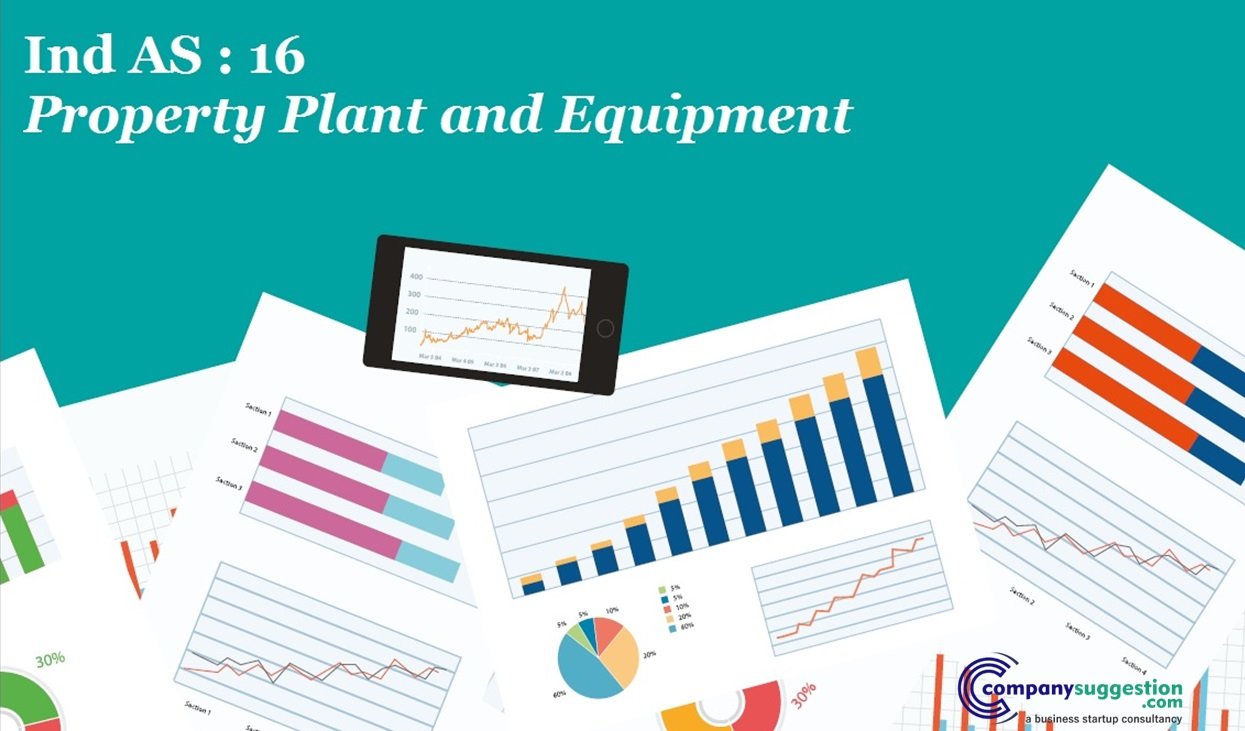The financial statements of a group in which the assets, liabilities, equity, income, expenses and cash flows of the parent and its subsidiaries are presented as a single economic entity.
 Ind.AS. 110 on Consolidated Financial Statements establishes principles for the presentation and preparation of consolidated financial statements when an entity controls one or more other entities.
Ind.AS. 110 on Consolidated Financial Statements establishes principles for the presentation and preparation of consolidated financial statements when an entity controls one or more other entities.
To meet objective of this Ind AS, This Ind AS-
- Requires an entity (the parent) that controls one or more other entities (subsidiaries) to present consolidated financial statements;
- Defines the principle of control, and establishes control as the basis for consolidation;
- Sets out how to apply the principle of control to identify whether an investor controls an investee and therefore must consolidate the investee;
- Sets out the accounting requirements for the preparation of consolidated financial statements; and
- Defines an investment entity and sets out an exception to consolidating particular subsidiaries of an investment entity.
- When parent need not to require prepare Consolidated Financial Statement-
Under the following situations parents shall not require to prepare consolidated financial statements-
- A parent need not present consolidated financial statements if it meets all the following conditions-
- It is a wholly-owned subsidiary or is a partially-owned subsidiary of another entity and all its other owners, including those not otherwise entitled to vote, have been informed about, and do not object to, the parent not presenting consolidated financial statements;
- Its debt or equity instruments are not traded in a public market (a domestic or foreign stock exchange or an over-the-counter market, including local and regional markets);
- It did not file, nor is it in the process of filing, its financial statements with a securities commission or other regulatory organisation for the purpose of issuing any class of instruments in a public market; and
- Its ultimate or any intermediate parent produces consolidated financial statements that are available for public use and comply with Ind AS’s.
- Post-employment benefit plans or other long-term employee benefit plans to which Ind. AS19 Employee Benefits applies.
- An investment entity need not present consolidated financial statements if it is required, in accordance with paragraph 31 of this Ind. AS, to measure all of its subsidiaries at fair value through profit or loss.
- Meaning of Control in Consolidation
Definition of control is play very important role in understanding of this Ind AS. So to identify whether the investor controls the investee for the purpose of consolidation, an investor controls an investee if and only if the investor has all the following-
- Power over the investee,
- Exposure, or rights, to variable returns from its involvement with the investee, and
- The ability to use its power over the investee to affect the amount of the investor’s returns.
However, an investor that holds only protective rights does not have power over an investeeand consequently does not control the investee.An investor is exposed, or has rights, to variable returns from its involvement with the investee when the investor’s returns from its involvement have the potential to vary as a result of the investee’s performance. The investor’s returns can be positive, negative or both.An investor controls an investee if the investor not only has power over the investee and exposure or rights to variable returns from its involvement with the investee, but also has the ability to use its power to affect the investor’s returns from its involvement with the investee.
- Potential voting rights
When potential voting rights, or other derivatives containing potential voting rights, exist, the proportion of profit or loss and changes in equity allocated to the parent and non- controlling interests in preparing consolidated financial statements is determined solely on the basis of existing ownership interests and does not reflect the possible exercise or conversion of potential voting rights and other derivatives, unless. However, the proportion allocated to the parent and non-controlling interests in preparing consolidated financial statements is determined by taking into account the eventual exercise of those potential voting rights and other derivatives that currently give the entity access to the returns.
- How to handle dual Control voting Power vs. Board control?
Two or more investors collectively controlan investee when they must act together to direct the relevant activities. In such cases, because no investor can direct the activities without the co-operation of the others, no investor individually controls the investee. For example, consider a situation, where X holds 51% equity shares in Zand Y holds 49% in Z. On the other hand, X has a right to appoint 2 directors on the Board of Z while Y has a right to appoint 3 directors. Each investor would account for its interest in the investee in accordance with the relevant Ind. ASs, such as Ind. AS 111, Joint Arrangements, Ind. AS 28, Investments in Associates and Joint Ventures, or Ind. AS 109, Financial Instruments.
- De facto Control
When assessing control, an investor shall consider the nature of its relationship with other parties and whether those other parties are acting on the investor’s behalf. The determination of whether other parties are acting as de facto agents requires judgement, considering not only the nature of the relationship but also how those parties interact with each other and the investor parties interact with each other. A party is a de facto agent when the investor has, or those that direct the activities of the investor have, the ability to direct that party to act on the investor’s behalf like the size of the investor’s holding of voting rights as compared to the size and wide spreading of holdings of the other vote holders, potential voting rights, rights issuing out contracts etc.
- Non-controlling Interests
A first-time adopter should apply the following requirements of Ind. AS 110 on ‘CFSs’ prospectively from the date of transition to Ind. AS
- The requirement that total comprehensive income should be attributed to the owners of the parent and to the non-controlling interests even if this results in the non-controlling interests having a deficit balance,
- The requirements under Ind. AS 110 for accounting for changes in the parent’s ownership interest in a subsidiary that do not result in a loss of control, i.e., considering such a change as an equity transaction (transaction with owners in their capacity as owners) to be accounted for accordingly,
- The requirements under Ind. AS 110 for accounting for a loss of control over a subsidiary, and the related requirements under Ind.AS 105 on ‘Non-current Assets Held for Sale and Discontinued Operations’.
However, it must be noted if a first-time adopter elects to apply Ind. AS 103 on ‘Business Combinations’ retrospectively to past business combinations, it should also apply Ind. AS 110 from the same date.
- Investment Entity
A parent shall determine whether it is an investment entity. An investment entity is an entity that-
- Obtains funds from one or more investors for the purpose of providing those investor(s) with investment management services;
- Commits to its investor(s) that its business purpose is to invest funds solely for returns from capital appreciation, investment income, or both; and
- Measures and evaluates the performance of substantially all of its investments on a fair value basis.
However,since under Ind.AS 40 on ‘Investment requires all investment properties are to be measured at cost initially and subsequently cost less depreciation, the requirement of investment entities to measure investment property at fair value model has been deleted.
- Consolidation of Investment company
Consolidation of Investment Company and its subsidiaries are as under-
- Whether an investment Company is not to consolidate its subsidiaries?
An investment company shall not consolidate its subsidiaries or apply Ind. AS 103 when it obtains control of another entity. Instead, an investment entity shall measure an investment in a subsidiary at fair value through profit or loss in accordance with Ind. AS 109.
- When an investment Company is to consolidate its subsidiaries? However, if an investment entity has a subsidiary that provides services that relate to the investment entity’s investment activities, it shall consolidate that subsidiary in accordance with this Ind. AS and apply the requirements of Ind. AS 103 to the acquisition of any such subsidiary.
- Uniform Accounting Policies
A parent shall prepare consolidated financial statements using uniform accounting policies for like transactions and other events in similar circumstances. If a member of the group uses accounting policies other than those adopted in the consolidated financial statements for like transactions and events in similar circumstances, appropriate adjustments are made to that group member’s financial statements in preparing the consolidated financial statements to ensure conformity with the group’s accounting policies.
- Measurement
An entity includes the income and expenses of a subsidiary in the consolidated financial statements. Income and expenses of the subsidiary are based on the amounts of the assets and liabilities recognised in the consolidated financial statements at the acquisition date. For example, depreciation expense recognised in the consolidated statement of profit and loss after the acquisition date is based on the fair values of the related depreciable assets recognised in the consolidated financial statements at the acquisition date.
- Reporting Date
The financial statements of the parent and its subsidiaries used in the preparation of the consolidated financial statements shall have the same reporting date. When the end of the reporting period of the parent is different from that of a subsidiary, the subsidiary prepares, for consolidation purposes, additional financial information as of the same date as the financial statements of the parent to enable the parent to consolidate the financial information of the subsidiary, unless it is impracticable to do so. If it is impracticable to do so, the parent shall consolidate the financial information of the subsidiary using the most recent financial statements of the subsidiary adjusted for the effects of significant transactions or events that occur between the date of those financial statements and the date of the consolidated financial statements. In any case, the difference between the date of the subsidiary’s financial statements and that of the consolidated financial statements shall be not more than three months, and the length of the reporting periods and any difference between the dates of the financial statements shall be the same from period to period.
- Pooling of Interest Method for entities under Common control
Business Combination transactions between entities under Common control should be accounted under ‘pooling of interest method’. The assets and liabilities of the combined entities are reflected at their carrying amounts. No adjustments are made to reflect fair values nor are new assets and liabilities recognised. The only adjustments warranted are to harmonise accounting policies. IFRS 3 does not apply to combination of business or entities under common control but Ind. AS 103 includes transactions transfer of subsidiaries or business between entities within a group.
- Non-controlling interests in Consolidated Balance Sheet
A parent shall present non-controlling interests in the consolidated balance sheet within equity, separately from the equity of the owners of the parent. An entity shall attribute the profit or loss and each component of other comprehensive income to the owners of the parent and to the non-controlling interests. The entity shall also attribute total comprehensive income to the owners of the parent and to the non- controlling interests even if this results in the non-controlling interests having a deficit balance.
- When to adopt Equity method of accounting?
Equity method is adopted only for Consolidated Financial statements, not in separate financial statements. Associates and joint ventures are accounted for using the equity method in CFC unless they meet the criteria to be classified as ‘held for sale’ under Ind. AS 105, ‘Non-current assets held for sale and discontinued operations’. Under the equity method, the investment in the associate or joint venture is initially carried at cost. It is increased or decreased to recognise the investor’s share of the profit or loss of the associate or joint venture after the date of acquisition. When it is impracticable, Ind. AS 28 allows the exemption from use of uniform accounting policies to perform equity method accounting of associates. IFRS does not allow this option.
- Loss of control
If a parent loses control of a subsidiary, it shall-
- De-recognise
- The assets (including any goodwill) and liabilities of the subsidiary at their carrying amounts at the date when control is lost; and
- The carrying amount of any non-controlling interests in the former subsidiary at the date when control is lost (including any components of other comprehensive income attributable to them).
- Recognise
- The fair value of the consideration received, if any, from the transaction, event or circumstances that resulted in the loss of control;
- If the transaction, event or circumstances that resulted in the loss of control involves a distribution of shares of the subsidiary to owners in their capacity as owners, that distribution; and
- Any investment retained in the former subsidiary at its fair value at the date when control is lost.
- Reclassify to profit or loss or transfer directly to retained earnings if required by other Ind. ASs, the amounts recognised in other comprehensive income in relation to the subsidiary.
- Recognise any resulting difference as a gain or loss in profit or loss attributable to the parent.
- Conclusion
Before the commencement the Companies Act 2013, consolidated financial statements are under SEBI requirements for listed companies. Consolidated financial statements are under the direction of AS 21 on Consolidated Financial Statements and ICAI guidance note there on. But, as per Section 129 (3) of the new companies act 2013,Where a company has one or more subsidiaries, it shall, in addition to financial statements provided under sub-section (2), prepare a consolidated financial statement of the company and of all the subsidiaries in the same form and manner as that of its own which shall also be laid before the annual general meeting of the company along with the laying of its financial statement under sub-section (2). This is primarily to toe the line of Ind. 110 on consolidated financial statements that will place India IFRS regime.Since there are seeming differences under the Companies Act requirements as compared to the requirements of Ind. AS 110 it is advisable to follow the stricter of the two unless there is clear cut direction: if not advisable to consider the provisions of the two to sail through properly. The MCA has by issuing a few clarifications by extending certain exemptions for transitory year 2014/15. CFSs will present a single more effective or coherent whole presentation for shareholders and all stakeholders spread across the globe presently, with a potency to reach out to other planets whence human kingdom starts settling there. Today, since the requirements of consolidated financial statement are roped in, under the Companies Act 2013, it is applicable that very fact or actto the companies not coming under the knotof IND ASregime.












